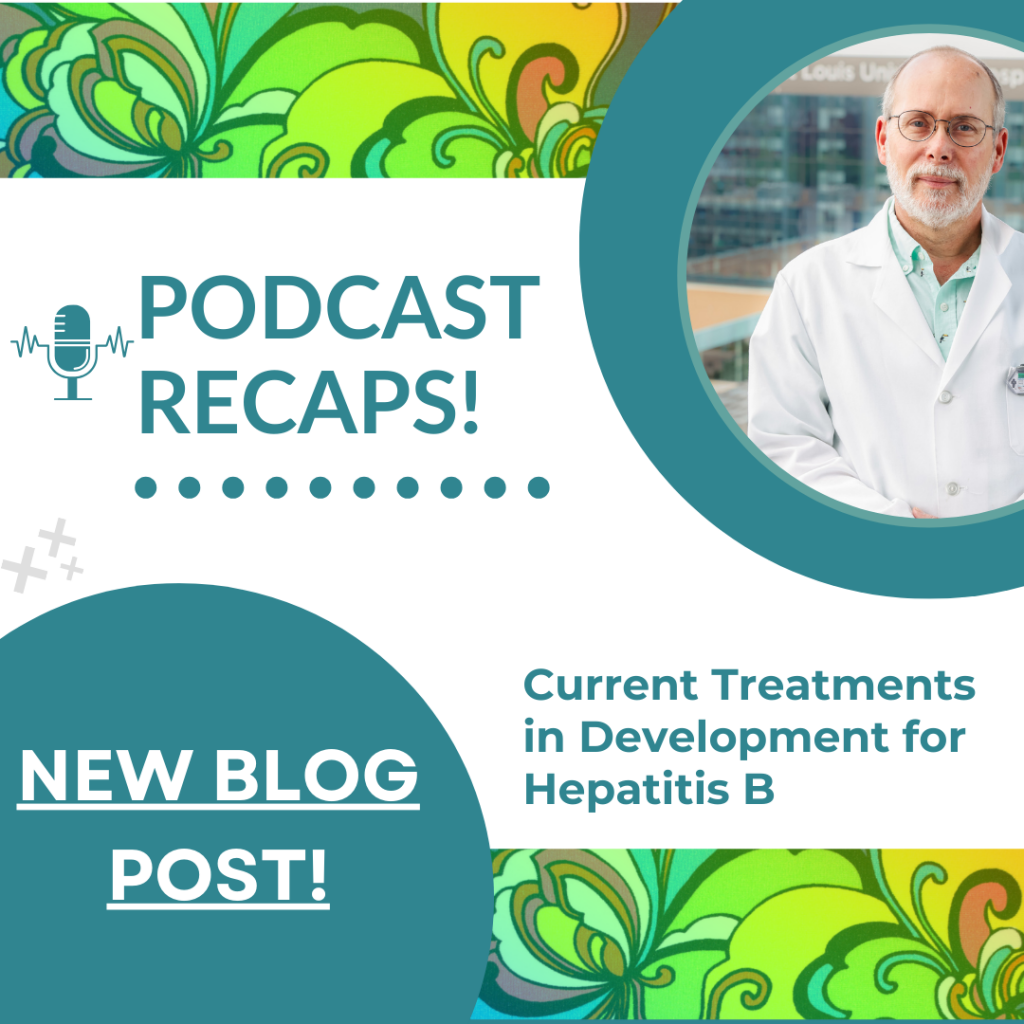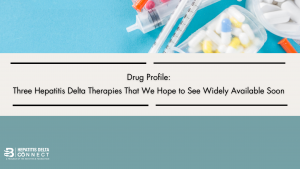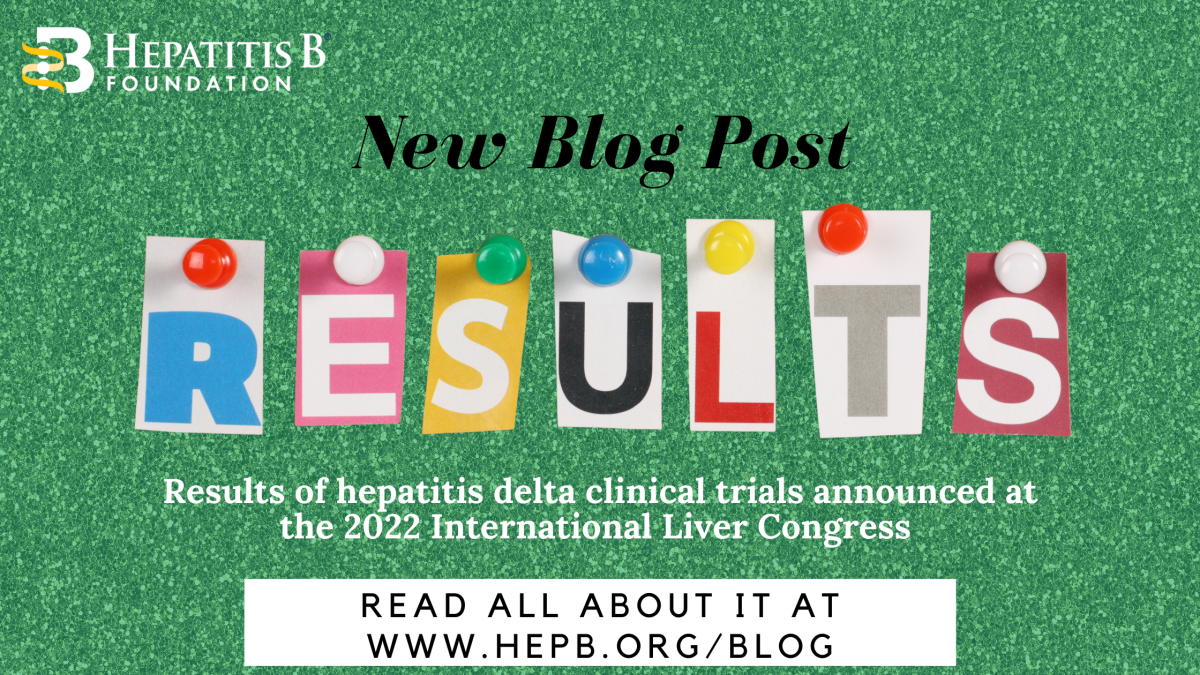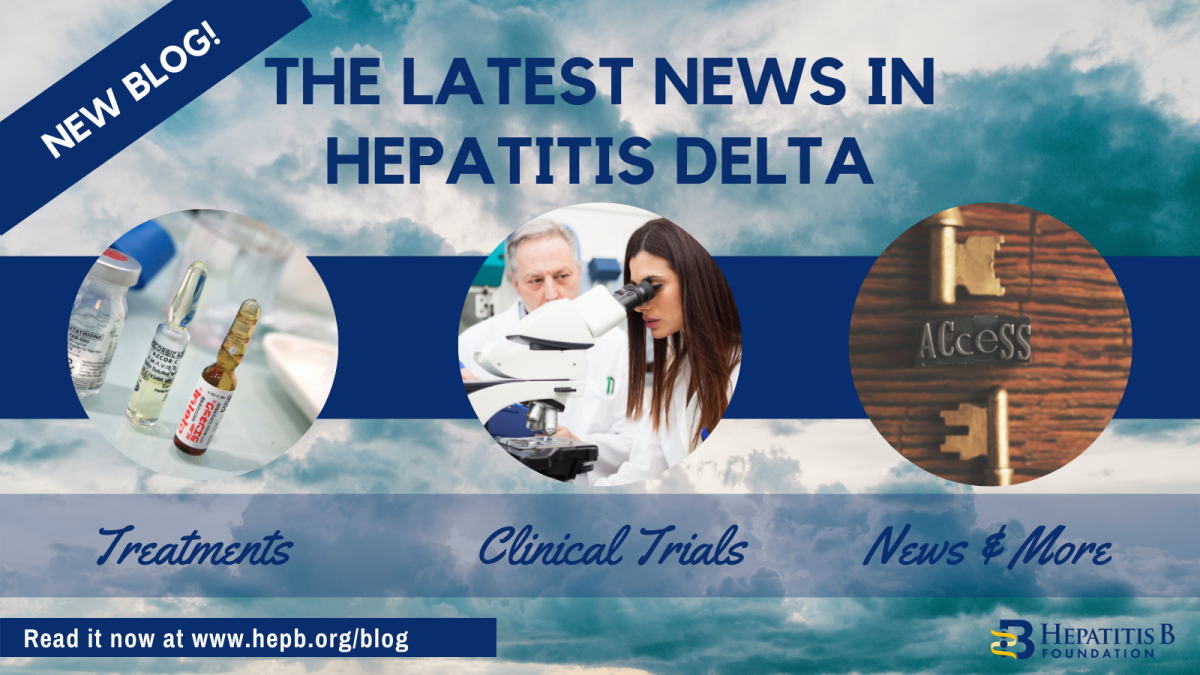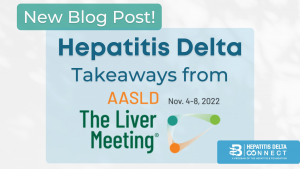
This year, the annual Liver Meeting, hosted by the American Association for the Study of Liver Diseases (AASLD), was held in Washington, D.C. The featured presentations included new innovations in liver transplant surgery, disease modeling (which is a process that uses cells to show how a disease develops and to test possible treatment approaches), and drug development. While an effective, functional cure for hepatitis B virus (HBV) is still 5-10 years away, researchers, scientists, healthcare providers, and people with lived experience all came together and agreed that more needs to be done to reduce the burden of liver diseases and improve health outcomes now. One highlight of the meeting was Dr. Francis Collins, former director of the U.S. National Institutes of Health and special advisor to President Biden, hosting a special session to introduce a national hepatitis C elimination plan for the U.S. Unfortunately, this plan is focused on hepatitis C. As a response, the Hepatitis B Foundation will soon send an advocacy letter pushing for the inclusion of hepatitis B and hepatitis delta in this plan. Make sure you are signed up for our Action Center alerts to stay engaged with hepatitis B advocacy efforts.
Of particular note at this year’s meeting were the presence of many patient advocates and people with lived experience, and an increased focus on hepatitis delta. One important hepatitis delta poster presentation was delivered by Dr. Tatyana Kushner of Mount Sinai Hospital in New York City, entitled “HDV Patient Perspective: The Impact of Disease and Current Unmet Needs.” By including the perspectives of people living with hepatitis delta virus (HDV), this study aimed to empower the patient community. Dr. Kushner and her colleagues collected data on people’s quality of life to identify unmet needs, barriers and gaps in HDV care (including disease management and access-to-care inequities).
The researchers found that a person’s care is affected in two ways: In the care they receive for their clinical diagnosis and their emotional journey after diagnosis. The participants’ experience of care was often negatively impacted by having a delayed HDV diagnosis, and limited access to specialized care and tolerable treatment options. Findings describe that the lack of specific and acceptable treatment options for hepatitis delta left people with little hope, which put an emotional burden on their life post-diagnosis. Due to the gaps in providers’ knowledge of HDV, participants held little trust in their healthcare providers. The study participants also shared that they suffered emotionally due to the stigma attached to their diagnosis.
Dr. Kushner and her colleagues call for an increased effort to educate healthcare providers on hepatitis delta, as their lack of HDV-specific knowledge drives health disparities or differences between groups, where one group is more burdened by a disease than the other. These are driven by unequal opportunities to achieve good health (CDC, 2020). Health disparities are preventable, and educating providers is the first step to overcoming these inequalities. Educating providers on HDV will lead to more rapid identification of the disease, as they will have a better understanding of the signs, symptoms and risk factors for hepatitis delta. Increasing advocacy efforts for point-of-care testing for both HBV and HDV in the U.S. will increase levels of testing and earlier identification of people at risk for the diseases. Timely diagnosis allows for people to be linked to specialty care earlier, ultimately improving health outcomes. Improving community awareness of HDV will combat stigma and likely reduce testing hesitancy, which can improve health outcomes. The researchers call for drug developers to meet the needs of the patient community by developing tolerable and hepatitis delta-specific treatments.
In terms of drug development, researchers presented on antiviral treatments for people living with HDV and discussed preferred outcomes of treatment, based on what they believed to be most helpful to each individual’s physical health. To understand these treatment considerations, it is important to review how HDV functions. Hepatitis delta virus (HDV) uses a person’s RNA (ribonucleic acid) to produce and replicate the virus, so high HDV RNA levels in the blood indicate severe infection, and low or undetectable HDV RNA levels indicate that the virus is not rapidly reproducing (Stephenson-Tsoris & Casey, 2022). A virological response is defined as a long-term period of low-level replication that leads to undetectable HDV RNA levels in the blood six months after stopping treatment, and this indicates viral suppression (Yamashiro et al., 2004). A biochemical response is defined as normalization of alanine aminotransferase (ALT) levels after antiviral treatment (Kim et al., 2022). When liver cells are damaged, they release ALT into the bloodstream, so high levels of ALT indicate that one’s liver is diseased or damaged (MedlinePlus, n.d.). ALT normalization is considered a good indicator that antiviral therapy is working because it means that there is less liver damage, liver disease is less severe, and people living with HBV/HDV are at less risk of harm (Kim et al., 2022).
One study of interest from the meeting was the D-LIVR study by Eiger BioPharmaceuticals, Inc.: Lonafarnib Global Study in Chronic Hepatitis Delta. This study consisted of 400 participants, who were all on treatment for 48 weeks, then followed up with researchers 24 weeks after treatment. In total, 50 participants received pegylated interferon (Peg IFN) treatment for 48 weeks; 125 participants received a combination of Lonafarnib, Ritonavir and Peg IFN; and 175 participants received the oral antiviral therapy Lonafarnib and Ritonavir. There were also 50 people on a placebo treatment. A placebo is a harmless pill that has no effect on a person, and is often used in clinical trials to test the effectiveness of a specific treatment being studied, in this case, Peg IFN, Lonafarnib and Ritonavir (Harvard Health Publishing, 2021). The researchers decided that they wanted to see a decline in HDV RNA (virologic response) and normalization of ALT (biochemical response) at week 48 as their study’s main outcome or proof that the treatment could work. In this study, an acceptable virologic response was defined as a “2log decline of HDV RNA levels,” which means they wanted to see HDV RNA levels decrease by 99% from the original levels that were measured before starting treatment (Wikipedia, n.d.).
Pegylated interferon (Peg IFN) is a protein-based medication that prompts the body to activate its natural immune system (induce innate antiviral response) (Zhang & Urban, 2021; Drugbank, n.d.). For Peg IFN-based treatments, researchers determine that undetectable HDV RNA six months after stopping treatment is desirable. However, researchers emphasize the importance of yearly HDV RNA post-treatment screening to monitor for viral relapses after treatment. For long-term treatment (over 48 weeks), a 99% reduction of HDV RNA concentration levels is an appropriate virologic response for non-interferon-based treatments, but more studies must be done to establish whether a person living with hepatitis delta is actually benefiting from the treatment (this is called clinical benefit). When establishing the clinical benefits for non-interferon-based treatments (or any new treatment), researchers can measure delays in disease progression or improvement of signs and symptoms of the disease, which includes symptom relief, improved functioning and improved survival rates (Lee, n.d).
Based on a variety of extensive studies (not just D-LIVR), the researchers decided to combine virologic and biochemical responses to try to demonstrate the clinical benefit of using ongoing antiviral treatment as a functional cure for hepatitis delta. They concluded that acceptable endpoints for HDV treatment studies include undetectable HDV RNA six months after stopping treatment, the loss of the hepatitis B surface antigen (HBsAg), and ALT normalization in people living with chronic hepatitis delta. This can also be considered a functional cure since there are undetectable levels of HBsAg and HDV RNA in the blood for a sustained period of time, even after finishing treatment (Wong et al., 2022).
While there is still time before we overcome the burden of hepatitis delta, the presentations from The Liver Meeting show us that researchers and scientists are constantly working to improve the lives of people living with hepatitis delta. Development toward a functional cure is progressing, and advocates are incorporating peoples’ lived experiences and perspectives into drug development and education. Collaboration between all these groups is the best way to move forward in the fight against hepatitis delta.
For more information on hepatitis delta, you can visit the Hepatitis Delta Connect website or review this hepatitis delta fact sheet.
References
Centers for Disease Control and Prevention. (2020). Health disparities. Centers for Disease Control and Prevention, Division of Adolescent and School Health, National Center for HIV/AIDS, Viral Hepatitis, STD, and TB Prevention. https://www.cdc.gov/healthyyouth/disparities/index.htm
Drugbank. (n.d.). Peginterferon alfa-2a. Drugbank. https://go.drugbank.com/drugs/DB00008
Harvard Health Publishing. (2021, December 13). The power of the placebo effect. Harvard Health Publishing, Harvard Medical School. https://www.health.harvard.edu/mental-health/the-power-of-the-placebo-effect
Kau, A., Vermehren, J., & Sarrazin, C. (2008). Treatment predictors of a sustained virologic response in hepatitis B and C. Journal of Hepatology, 49(4), 634-651. https://doi.org/10.1016/j.jhep.2008.07.013
Kim, S. H., Cho, E. J., Jang, B. O., Lee, K., Choi, J. K., Choi, G. H., Lee, J. H., Yu, S. J., Kim, Y. J., Lee, Y. B., Yoon, J. H., Kim, J. W., Jeong, S. H., & Jang, E. S. (2022). Comparison of biochemical response during antiviral treatment in patients with chronic hepatitis B infection. Liver International: Official Journal of the International Association for the Study of the Liver, 42(2), 320–329. https://doi.org/10.1111/liv.15086
Lee, J. (n.d.). Defining Clinical Benefit in Clinical Trials: FDA Perspective [Presentation]. U.S. Food and Drug Administration, Center for Drug Evaluation and Research. https://celiac.org/main/wp-content/uploads/2015/04/great3-07.pdf
MedlinePlus. (n.d.). ALT blood test. National Library of Medicine (U.S.). [updated August 3, 2022]. https://medlineplus.gov/lab-tests/alt-blood-test/
Raman, S. (2022 October 25). Administration eyes national hepatitis C treatment plan. Roll Call: Policy. https://rollcall.com/2022/10/25/administration-eyes-national-hepatitis-c-treatment-plan/
Stephenson-Tsoris, S., & Casey, J. L. (2022). Hepatitis delta virus genome RNA synthesis initiates at position 1646 with a nontemplated guanosine. Journal of Virology, 96(4), e0201721. https://doi.org/10.1128/JVI.02017-21
Wikipedia. (n.d). Log reduction. https://en.wikipedia.org/wiki/Log_reduction
Wong, G. L. H., Gane, E., & Lok, A. S. F. (2022). How to achieve functional cure of HBV: Stopping NUCs, adding interferon or new drug development?. Journal of Hepatology, 76(6), 1249–1262. https://doi.org/10.1016/j.jhep.2021.11.024
Yamashiro, T., Nagayama, K., Enomoto, N., Watanabe, H., Miyagi, T., Nakasone, H., Sakugawa, H., & Watanabe, M. (2004). Quantitation of the level of hepatitis Delta virus RNA in serum, by real-time polymerase chain reaction—and its possible correlation with the clinical stage of liver disease. The Journal of Infectious Diseases, 189(7), 1151–1157. https://doi.org/10.1086/382133
Zhang, Z., & Urban, S. (2021). New insights into HDV persistence: The role of interferon response and implications for upcoming novel therapies. Journal of Hepatology, 74(3), P686-699. https://doi.org/10.1016/j.jhep.2020.11.032
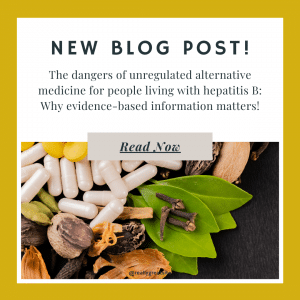


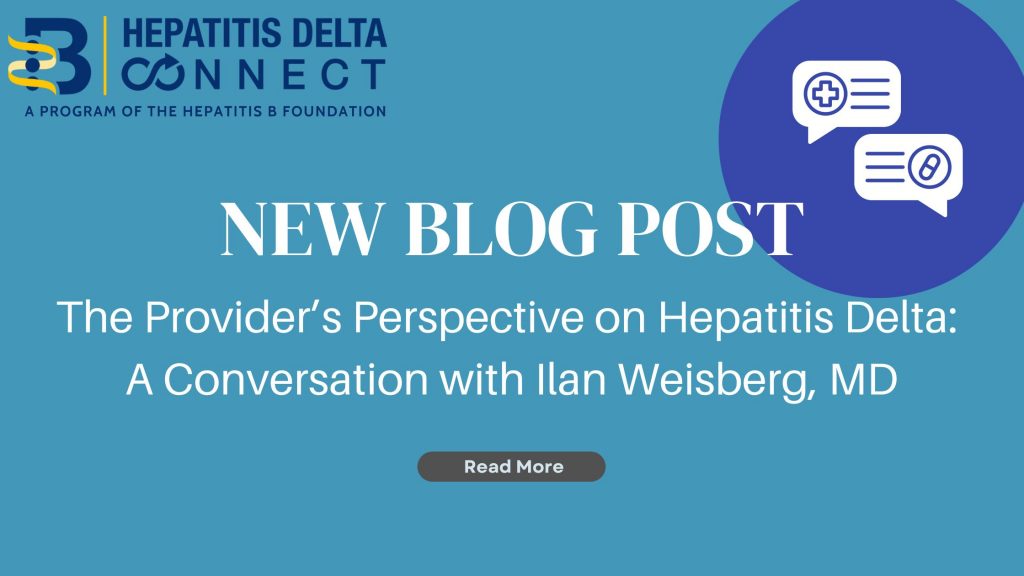 Dr. Ilan Weisberg is a highly acclaimed gastroenterologist and hepatologist currently serving as the Chief of Gastroenterology and Hepatology at New York-Presbyterian Brooklyn Methodist Hospital. He shares the Hepatitis B Foundation’s enthusiasm for advocacy and education surrounding hepatitis B and D, and was eager to provide the perspective of a healthcare provider on the current state of hepatitis delta screening and management, as well as some common misconceptions.
Dr. Ilan Weisberg is a highly acclaimed gastroenterologist and hepatologist currently serving as the Chief of Gastroenterology and Hepatology at New York-Presbyterian Brooklyn Methodist Hospital. He shares the Hepatitis B Foundation’s enthusiasm for advocacy and education surrounding hepatitis B and D, and was eager to provide the perspective of a healthcare provider on the current state of hepatitis delta screening and management, as well as some common misconceptions.